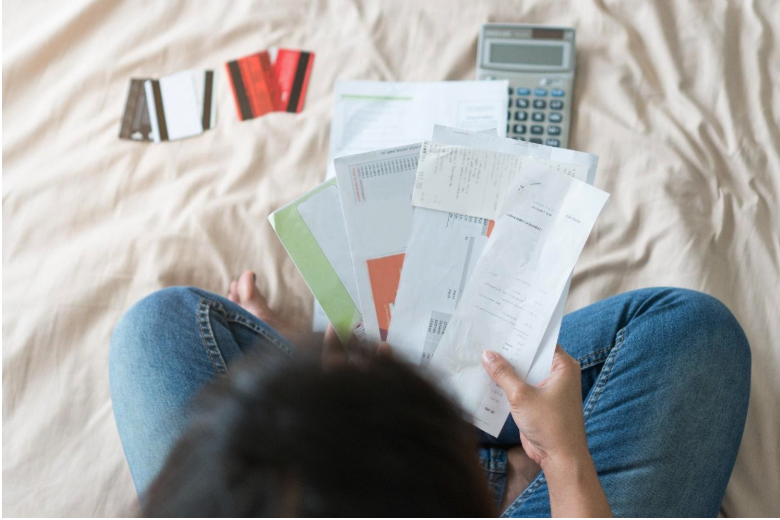
It’s easy for debt to pile up and accumulate. Whether it’s from poor spending habits, outstanding medical bills, or unexpected emergencies, debt can quickly get out of control and become a huge financial obstacle that affects your emotional and physical health. Debt is a common reason for bankruptcy. With bankruptcy, you can take a Chapter 7 means test calculator to estimate Chapter 7 qualification. Alternatively, you could take a Chapter 13 repayment plan calculator to estimate your Chapter 13 repayment plan.
However, bankruptcy does not have to be the ending, and this does not mean you have to feel discouraged or overwhelmed. Debt is typically caused by poor financial or life decisions and developing good money habits will help you pay it off quickly and will set the foundation for an ongoing healthy relationship with money. Though it might seem like a daunting task, it’s completely reasonable! You just have to tackle things one step at a time.
5 Ways to Pay Off Debt From Multiple Sources
If you have debt coming from only one source, your strategy is simple: make the largest monthly payments you can until the debt is erased.
However, if you are like most other people in debt and have multiple debt accounts to pay off, you will need to find the optimal debt elimination method that aligns best with your goal.
Usually, the best way to pay off multiple streams of debt is using what’s called the debt avalanche method. This method is efficient because it reduces the amount of interest you are paying. However, if that doesn’t work for you, there are certainly other methods you can consider. Here are the 5 best ways to pay off debt.
1) Debt Avalanche Method
The debt avalanche method, also known as debt stacking, means you’ll pay off each account from the highest interest rate to the lowest.
Here is how it works:
- Pay the minimum balance on each of your accounts.
- Allocate as much money as you can to the account with the highest interest rate.
- As soon as the debt with the highest interest is gone, begin paying as much as you can to the account with the next highest interest.
- Continue steps 1-3 until all your debts have been paid off.
With each account you pay off, you are freeing up more money to contribute towards your next debt. Also, since you are paying off your debts according to interest rates, you are paying the least amount of interest overall. This, in turn, helps you get out of debt faster. Like an avalanche, however, it usually takes a while to see results. But after you gain some traction, your debts will begin to rush away quickly.
If you think you might get discouraged from slow progress and think small, consistent wins to keep you motivated will help, the Snowball Method may be better suited for you.
2) Debt Snowball Method
The Debt Snowball Method means you will be paying off your debts beginning from the smallest balance up to the largest balance. This method is popular because it is made up of a succession of small pay-offs in the beginning. This provides motivation and momentum to help pay off the remainder of your debt. The Snowball Method also helps improve your credit scores faster than the Avalanche method as you are lowering credit utilization on each card and are reducing the amount of accounts with outstanding balances.
Here is how it works:
- Pay the minimum balance on each of your accounts.
- Allocate as much money as you can to the account with the smallest balance.
- As soon as the account with the smallest balance is paid off, begin paying as much as you can towards the account with the next smallest balance.
- Continue steps 1-3 until all your debts have been paid off.
Like a snowball rolling down a hill, you owe less and less money as you continue to pay off each account. You gain momentum and motivation to pay off more debt as you pay off your smallest debts first.
The Debt Snowball Method is particularly useful when you owe multiple balances on credit cards but can’t qualify for a low-interest personal loan or a new balance transfer credit card to consolidate your revolving debt.
3) Paying Off Debt Using Balance Transfers
Though the debt avalanche and snowball methods are the two main techniques for paying off debt, there are more specific strategies you can use in concurrence with them.
For example, if you have an account with a high-interest rate, you can transfer its balance to a credit card with a lower rate to save money on interest. This balance transfer technique works well with the avalanche method. Because you are using a balance transfer to lower the interest rate on your account with the highest interest, this gives you time to pay off the account with the next highest interest rate. Overall, this reduces the total amount of interest you are paying.
Additionally, many balance transfer cards have 0% APR during their introductory period. This gives you a chance to pay off your balance without having to worry about interest charges.
4) Paying Off Debt With a Personal Loan
Though it’s best to pay off credit card debt directly, there are some instances where you can’t afford to pay it off in full or by using any of the aforementioned tactics. Paying off your debt using a low-rate personal loan might be the best bet if you have several different cards with different due dates.
Paying off your debt using a personal loan may help your credit scores as it is an installment loan – this means your balance-to-limit ratio doesn’t affect your credit as credit cards do. It can also help avoid overload and can save you money with a low-interest rate. For some, it might be easier to keep track of a single installment loan with a fixed interest rate instead of managing your debt across several cards.
Just remember: Obey the terms of the loan or you may end up making your situation worse. Make sure you are making punctual payments on your loan and cut back on credit card spending to avoid creating additional debt.
5) Paying Off Debt Using a Debt Settlement
Debt settlement is the last option to consider when paying off credit card debt. This tactic is best for people with past-due credit statements who are able to make a large settlement payment to their creditors.
Debt settlement is an agreement with a creditor where you accept a partial payment for your credit card debt instead of its full balance. Though debt settlements are usually for those who’ve undergone certain extenuating circumstances, like the death of a family member, some creditors will allow debt settlements without any special circumstances.
You can pay up to half or less of your original debt with some creditors. You will, however, be responsible for paying taxes on the forgiven balance. The major players in this space are Freedom Debt Relief and National Debt Relief. You may want to check out reddit such as national debt relief reddit to see different reviews about this option. Many people also compare bankruptcy and debt settlement when deciding on debt relief.


